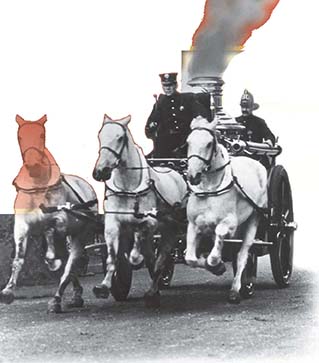SECTION 2: Cities Expand and Change

▲ Firetruck around 1900
WITNESS HISTORY  AUDIO
AUDIO
A Fiery Tide
As cities expanded, city services, such as fire departments, became more common. But that was not enough to save Chicago from a fire that left hundreds of thousands homeless.
“The firemen were working with extraordinary perseverance. When it seemed impossible for a man to stand without suffocation they carried their hose, sprinkling the houses opposite and endeavoring to stop its spread in a westerly direction. But it was evident by midnight that human ingenuity could not stem that fiery tide.”
—Chicago Tribune, October 11, 1869
Objectives
- Analyze the causes of urban growth in the late 1800s.
- Explain how technology improved city life.
- Evaluate how city dwellers solved the problems caused by rapid urban growth.
Terms and People
- urbanization
- rural-to-urban migrant
- skyscraper
- Elisha Otis
- mass transit
- suburb
- Frederick Law Olmsted
- tenement
NoteTaking
Reading Skill: Identify Main Ideas Record the main ideas of this section in a flowchart.

Why It Matters As one historian has noted, America was born on the farm and moved to the city. In 1860, most Americans lived in rural areas, with only 16 percent living in towns or cities with a population of 8,000 or more. By 1900, that percentage had doubled, and nearly 15 million Americans lived in cities with populations of more than 50,000. This period was the beginning of an upsurge in urbanization that both reflected and fueled massive changes in the way Americans lived. Section Focus Question: What challenges did city dwellers face, and how did they meet them?
America Becomes a Nation of Cities
In the late nineteenth century, America experienced a period of urbanization in which the number of cities and people living in them increased dramatically. Still, numbers and statistics do not tell the whole story of how Americans became city folk. Urban people lived differently from rural people. They worked on schedules, rode trolley cars, paid rents to live in apartment buildings, and interacted with many strangers. Over time, their urban values became part of American culture.
Cities Offer Advantages
America’s major cities were manufacturing and transportation centers clustered in the Northeast, on the Pacific Coast, and along the waterways of the Midwest. Connected




